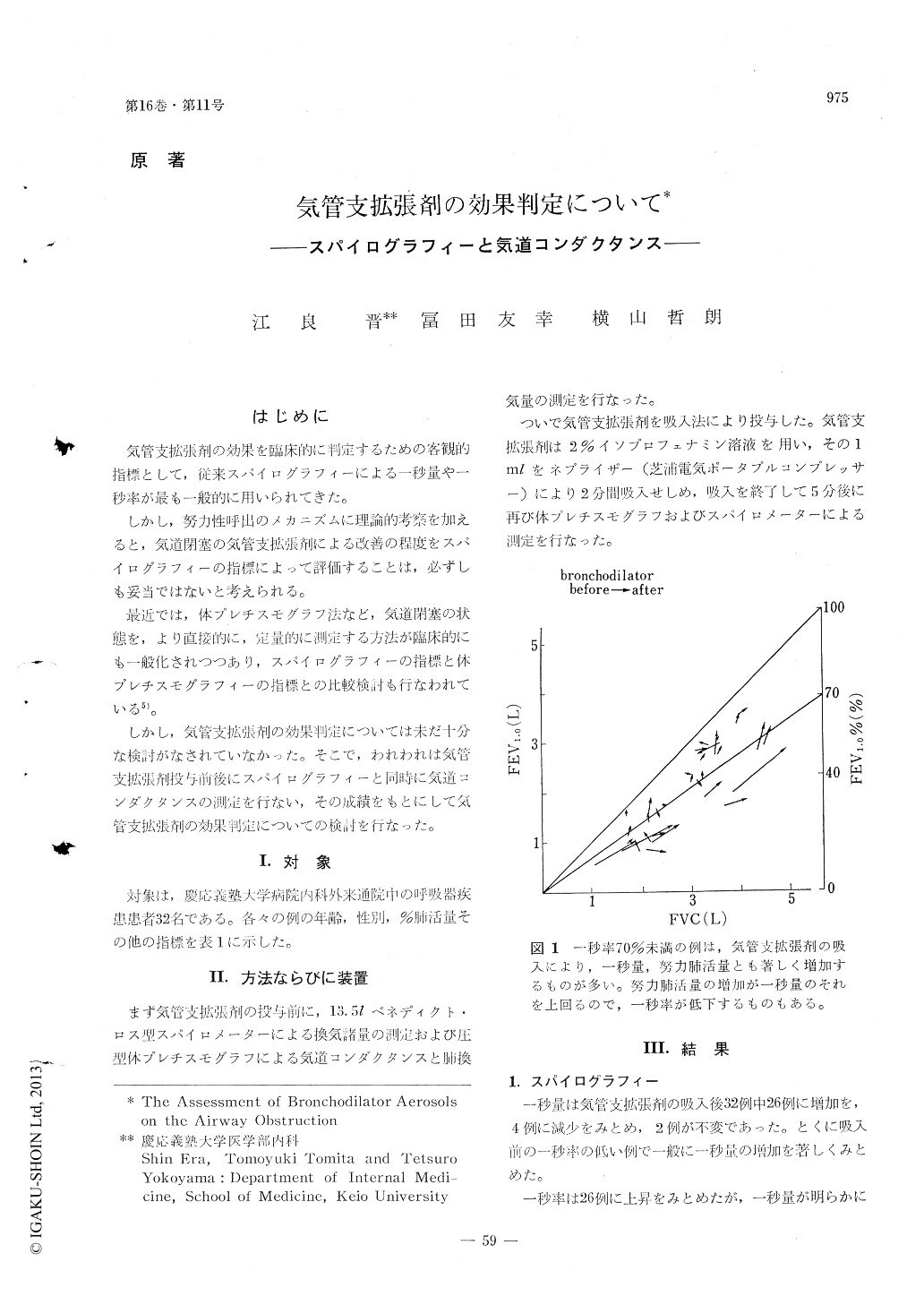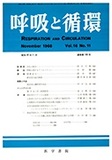Japanese
English
- 有料閲覧
- Abstract 文献概要
- 1ページ目 Look Inside
はじめに
気管支拡張剤の効果を臨床的に判定するための客観的指標として,従来スパイログラフィーによる一秒量や一秒率が最も一般的に用いられてきた。
しかし,努力性呼出のメカニズムに理論的考察を加えると,気道閉塞の気管支拡張剤による改善の程度をスパイログラフィーの指標によって評価することは,必ずしも妥当ではないと考えられる。
最近では,体プレチスモグラフ法など,気道閉塞の状態を,より直接的に,定量的に測定する方法が臨床的にも一般化されつつあり,スパイログラフィーの指標と体プレチスモグラフィーの指標との比較検討も行なわれている5)。
しかし,気管支拡張剤の効果判定については未だ十分な検討がなされていなかった。そこで,われわれは気管支拡張剤投与前後にスパイログラフィーと同時に気道コンダクタンスの測定を行ない,その成績をもとにして気管支拡張剤の効果判定についての検討を行なった。
The present study was conducted to eva-luate the effects of bronchodilator aerosol on the pulmonary physiology. Special interest was taken to compare the response of the parameters representing the degree of airway obstruction.
Thirty-two cases with or without clinical symptoms of airway obstruction were given 2% isoprophenamine aerosols. Prior to and 5 minutes after the aerosol inhalation the pulmonary function studies, including theroutine spirography and the body plethysmo-graphy, were done to collect the informations on the characteristics of the airway dynamics as well as of the lung volumes.
The present data indicated the followings :
1) The spirographic data, obtained prior to and after the bronchodilator aerosol admini-stration, were not sensitive enough to rep-resent the improvement of airway obstruction while the airway resistance or the airway conductance obtained on the body plethysmo-graphy picked up the overmentioned changes in airway dynamics.
2) The specific airway conductance (airway conductance per unit lung volumes) sensiti-vely demonstrated the changes in the dyna-mic properties of the airways even on the subjects accompanied by FEV1.0% within nor-mal limits.
Through the present experimental obser-vation we came to the conclusion that the specific airway conductance obtained by the body plethysmography was the enough sen-sitive and the most physiologically recom-mendable parameter to evaluate the response of the airway dynamics to the bronchodilator administration.

Copyright © 1968, Igaku-Shoin Ltd. All rights reserved.


